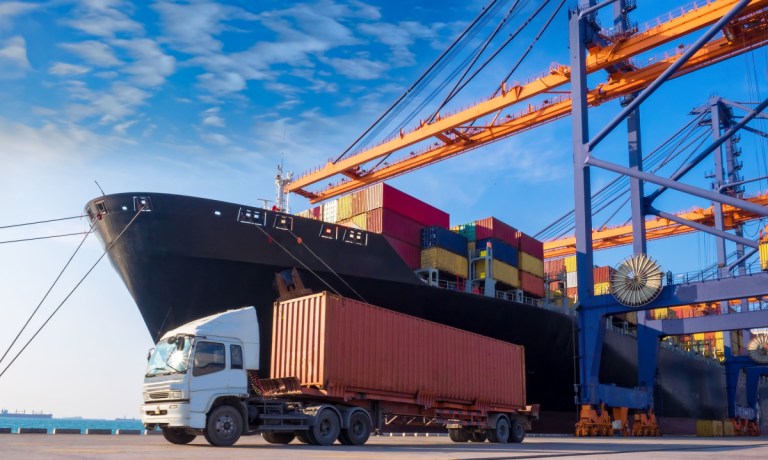
The freight market makes the world’s trade and commerce go ’round.
And, if the Monday (Aug. 19) second-quarter 2024 earnings call from freight booking and payment platform Freightos is any indication, digital transformation is increasingly what makes the freight market itself move.
The company hit new quarterly records for transactions, gross booking value (GBV), revenue and adjusted EBITDA, all exceeding management expectations.
But the biggest news was the announcement of Freightos’ acquisition of Shipsta, a freight-tender procurement platform used by dozens of Global 1000 enterprises to procure freight at scale from leading freight forwarders and carriers.
“Our robust second quarter performance underscores the growing strength and adoption of our platform in the international freight market. The acquisition of Shipsta, announced earlier Monday, marks a significant milestone in our journey to digitalize freight booking and procurement, by expanding our footprint in global freight tenders,” said Freightos CEO Zvi Schreiber. “We believe our solutions can be cross sold almost immediately.”
“The acquisition addresses the needs of our importers, exporters, forwarders and carriers that seek comprehensive solutions beyond spot freight bookings and sales and we think customers will love the joint offering,” Schreiber added in a separate statement.
Freightos executives stressed to investors that they see automation, data and artificial intelligence (AI) as the key growth levers unlocking the future of logistics and commerce.
“A lot of it is for our customers, and a lot of the applications are within our own operations as well,” said Schreiber. “We are getting more and more automated in how we support our operations.”
Read more: Freightos Earnings Show Digital Transformation Driving Traditional Industries
Per its financials, Freightos achieved a record 316,500 transactions in Q2 2024, up 32% year over year. This was the 18th consecutive quarter of record transactions, signaling a growing embrace of digital platforms across the freight sector. The company’s global air cargo volumes according to IATA data grew 15% year on year, and global ocean shipping volumes grew 6%, both outpacing market growth.
The number of unique buyer users digitally booking freight services across the Freightos platform grew by 16%, compared to the second quarter of 2023, to reach more than 19,000 during Q2.
“Our second quarter results highlight robust performance across all key metrics,” Freightos CFO Ran Shalev said. “We’re adjusting our 2024 guidance within our original range to reflect caution with respect to conditions in Europe and the disruption to shipping patterns in Asia due to the Red Sea crisis.”
The company’s GBV was $203.4 million in the second quarter, up 31% compared to the second quarter of 2023, and significantly above management’s expectations.
This outperformance, executives noted, stemmed mostly from the sustained high freight rates that continue to be driven by the Red Sea crisis.
See also: Freightos’ Growth Underscores Freight Sector’s Digital Embrace
Digital transformation in traditional industries like global freight involves integrating digital technologies to modernize operations, enhance efficiency, and improve customer experiences. However, scaling these solutions can be challenging due to ingrained behavioral impediments.
Instead of overhauling systems all at once, companies can implement digital solutions incrementally. This approach allows for adjustments along the way and reduces the risk of major disruptions.
Focusing on customer needs and enhancing the end-to-end customer experience, particularly around payments, can drive the adoption of digital solutions. When customers see the value of digital enhancements, they are more likely to support the change.
Within the truck transportation vertical specifically, the recent PYMNTS Intelligence report, “Moving Faster Than Ever: Real-Time Payments in the Transportation Industry,” in collaboration with The Clearing House, explored the incongruity between the industry’s core operations and its payment systems as an obstacle to growth and profitability.
The data shows that truck drivers overwhelmingly favor instant payments, with 93% saying they would use them if offered. Those who already receive instant pay cite speed, security and guaranteed funds as key benefits. Despite this preference, only 40% of truckers currently have access to these payment methods.